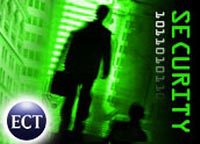The rate of emails containing dangerous software has significantly decreased in the first half of this year compared to the same period last year.  Statistics from the security firm Sophos indicate that out of every 91 emails sent, only 1 contains a virus or other types of malware, while last year’s rate was “1 in 35.”
Statistics from the security firm Sophos indicate that out of every 91 emails sent, only 1 contains a virus or other types of malware, while last year’s rate was “1 in 35.”
“Email is truly becoming safer,” said Graham Cluley, Senior Technology Consultant at Sophos.
Not Necessarily Good News…
The information provided by Sophos may not necessarily be good news. Cybercriminals are not stepping back from their activities. Instead, they are changing tactics to avoid detection and are developing new types of malware, Cluley warns.
Malware authors are now focusing their attention on Trojan programs—a type of malware that can integrate keyloggers to send login information, passwords, credit card numbers, online banking accounts, etc., back to a predetermined server.
Unlike viruses, Trojans do not have the ability to replicate themselves. Currently, Trojans account for up to 81% of the new malware detected by Sophos on the Internet.
Cybercriminals are also no longer interested in “big operations.” This is because once they send out large batches of emails containing viruses or Trojans, security firms quickly update their security applications, significantly reducing the effectiveness of these attacks. As a result, malware authors are now shifting towards sending only a few emails and focusing on specific victims.
Meanwhile, many malicious codes that have been around for a long time continue to spread widely on the Internet. The reason for this issue is the “laziness in programming new codes” among hackers. The second reason is that many people do not use antivirus software, making them prime targets for various types of malware.
The “Most Notorious” Malware
Ranking second and third on this list are Netsky-P and Zafi-B. Despite having been on the Internet for quite some time, they consistently dominate the top positions in Sophos’s monthly lists of the most dangerous software. Both are computer worms sent via email.
The most popular malware of 2006 is Sober-Z—a worm that only emerged earlier this year. However, despite its recent appearance, it has quickly spread widely. Currently, it still holds the number one position on Sophos’s list, accounting for about 22.4% of malware sent via email.
In Sophos’s Top 10 list, there are also “four members of the Mytob family.” Variants of Mytob have the ability to disable security software, send multiple copies to email addresses in the infected system’s address book, download other malicious codes, steal information, and more.
Other names on Sophos’s list include Nyxem-D, Blackmail, Kama Sutra, and others…
Hoàng Dũng


















































